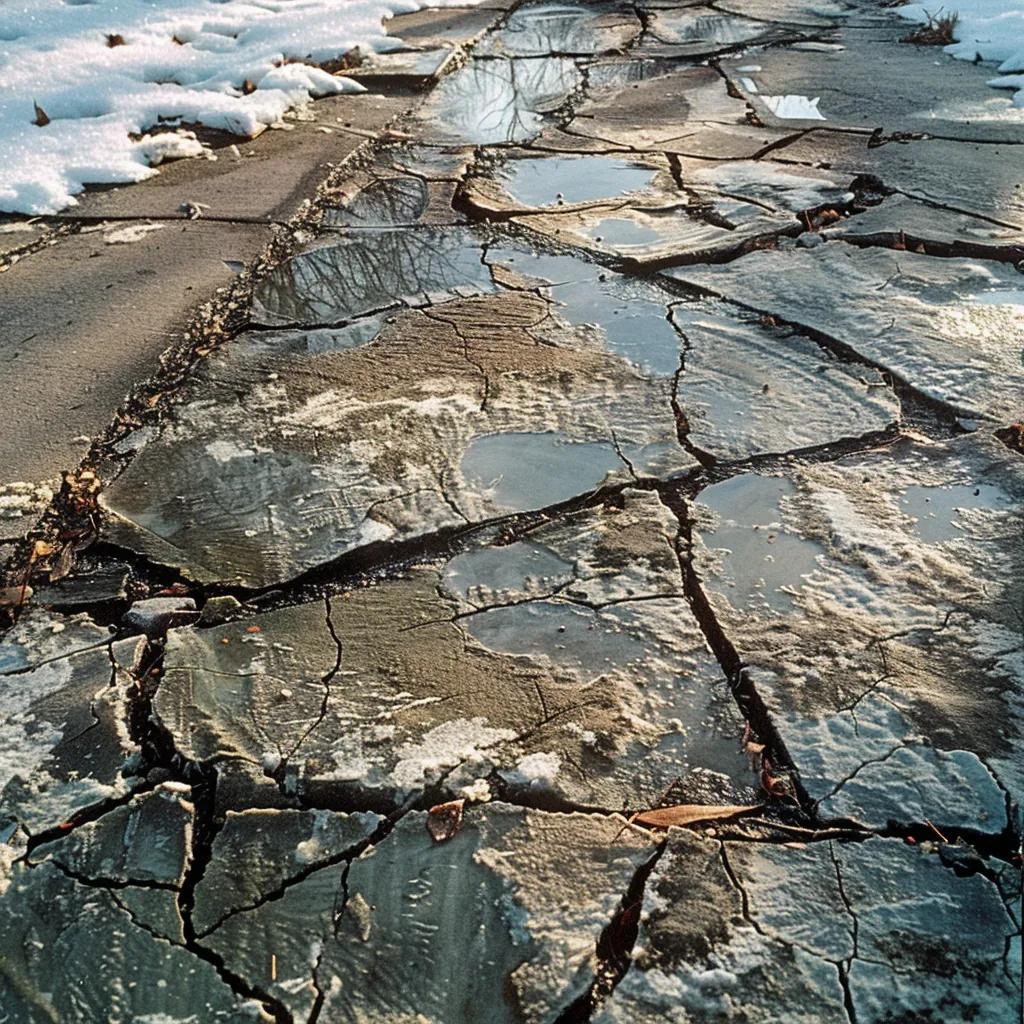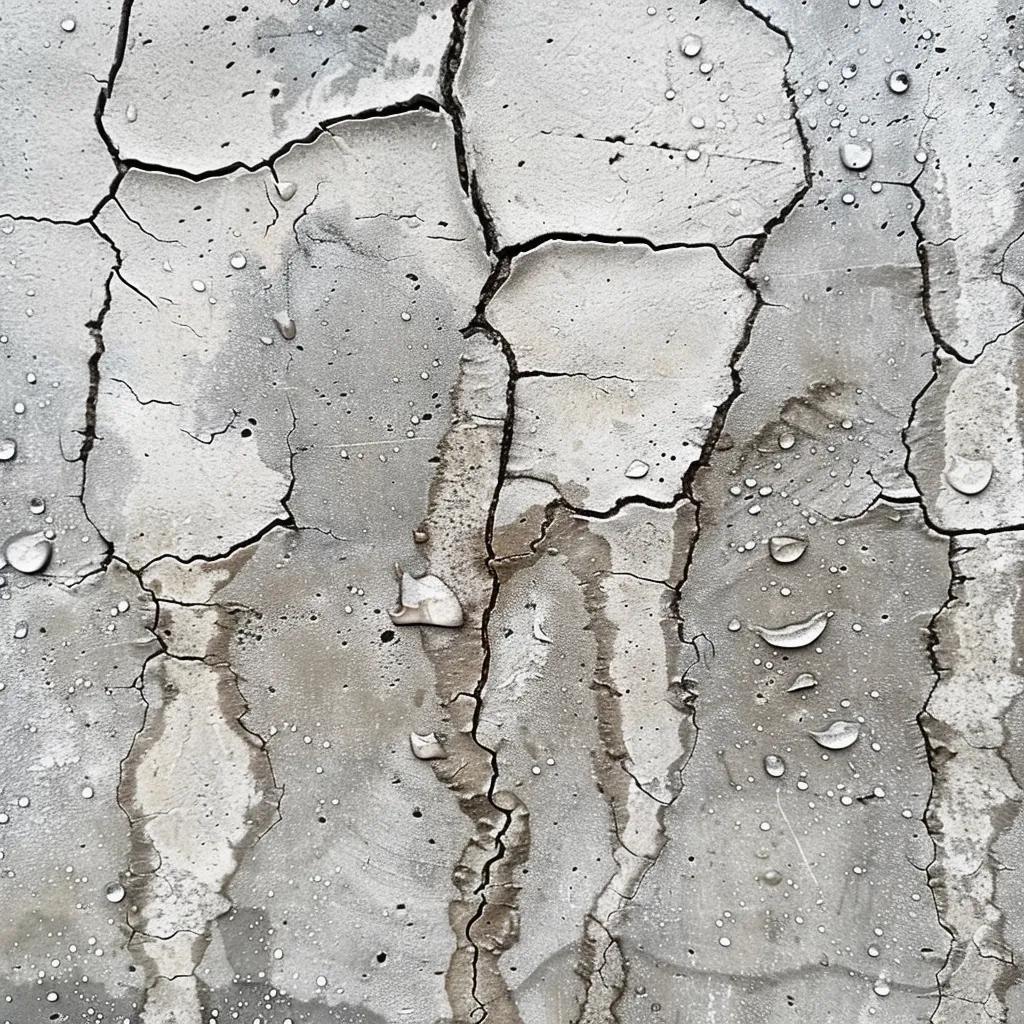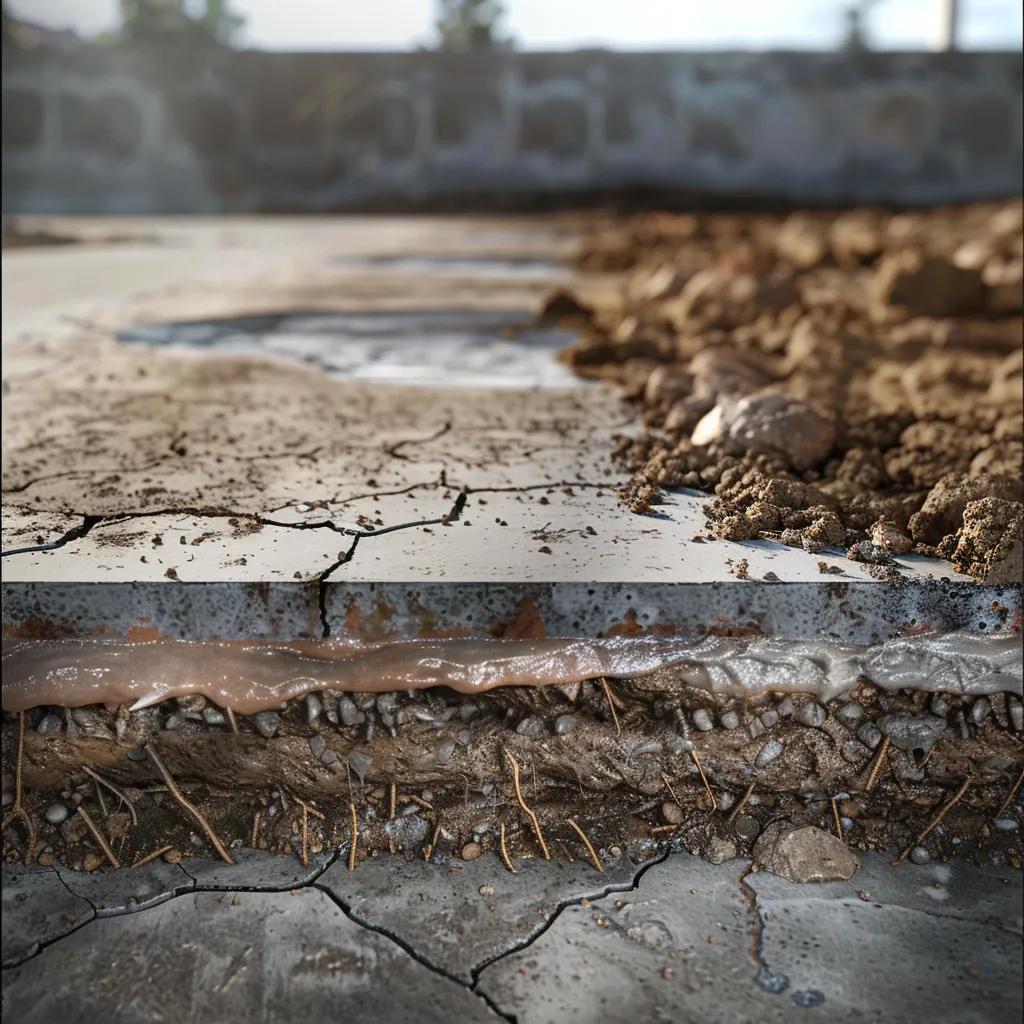Understanding Concrete Challenges: What Are the Common Issues With Concrete Work in Duluth’s Unique Climate and Soil Conditions?

Living in Duluth means dealing with some unique challenges when it comes to concrete. Our harsh winters and clay-heavy soils can wreak havoc on concrete surfaces, leading to cracks, spalling, and settlement issues. Every spring, homeowners are faced with the aftermath of frost heave and chemical exposure, which can be costly to repair. In this article, we’ll dive into how Duluth’s climate and soil contribute to common concrete problems, what signs to look out for, and how professional solutions can help. Plus, learn why Concrete Duluth MN’s local expertise and free estimates are your best bet for durable concrete in tough conditions.
How Does Duluth’s Climate Impact Concrete Durability?
Duluth’s climate is no friend to concrete. With cold winters and frequent temperature changes, concrete here is constantly under attack from moisture expansion and chemical exposure. When water seeps into the pores of concrete, freezes, and expands, it can cause micro-fractures that grow over time. For instance, a driveway repair that faces nightly freezes might show spiderweb cracking by spring, indicating deeper structural issues.
What Are the Effects of Freeze-Thaw Cycles on Concrete in Duluth?

- Concrete pores soak up water during thaws.
- Ice expansion can exert up to 2,000 psi of pressure inside.
- Repeated cycles turn micro-cracks into visible fissures and spalling.
Over time, these fractures can merge, reducing the concrete’s ability to bear weight and making surfaces rougher. Understanding this process is key to implementing effective repair and sealing strategies before things get worse.
Freeze-Thaw Cycles and Concrete Damage
Repeated freeze-thaw cycles are tough on concrete. As water inside the concrete freezes, it expands, creating pressure that leads to micro-cracks. Over time, these cracks can reduce the concrete’s strength and make surfaces rougher.
American Concrete Institute, “Guide to Durable Concrete” (2016)
This research gives a technical look at how freeze-thaw cycles affect concrete, which is crucial for understanding the challenges in Duluth’s climate.
How Do De-Icing Salts Contribute to Concrete Deterioration?
- Chloride ions can corrode rebar, weakening reinforcement.
- Salt solutions draw moisture deeper into concrete, worsening freeze-thaw damage.
- Repeated salt use leads to surface scaling and powdering.
These reactions weaken the surface layers and compromise long-term durability. Effective sealing and careful salt management are essential to slow down chemical erosion and maintain structural integrity.
Impact of De-Icing Salts on Concrete
De-icing salts, while great for melting ice, can speed up concrete deterioration. They penetrate cracks and react with the concrete, leading to rebar corrosion, moisture penetration, and surface scaling, ultimately weakening the structure.
Federal Highway Administration, “Effects of Deicing Salts on Concrete Pavements” (2018)
This study highlights the chemical reactions triggered by de-icing salts, which is crucial for understanding the specific challenges of concrete maintenance in areas where these salts are frequently used.
Why Is Duluth’s Cold Weather a Major Factor in Concrete Cracking?
- Thermal contraction in cement paste creates tensile stresses.
- Cold snaps followed by rapid thaw amplify stress differentials.
- Without proper control joints and insulation, cracks propagate uncontrolled.
This climate-driven cracking underscores the importance of designing slabs with adequate control joints and using cold-weather admixtures to enhance crack resistance. concrete slab contractors
What Role Do Duluth’s Soil Conditions Play in Concrete Damage?

Clay-rich soils common around Duluth expand and contract dramatically with moisture changes, undermining concrete foundations and slabs. Expansive soils can shift by several inches seasonally, applying uneven loads beneath concrete. For instance, a patio installed over poorly drained clay may tilt as soil swells, illustrating why soil composition and drainage are critical factors for stable installations.
An overview of Duluth soil types and their characteristics:
| Entity | Attribute | Value |
|---|---|---|
| Clay Soil | Moisture Retention | Holds water up to 40 percent by volume, enabling significant frost heave |
| Sandy Soil | Drainage Rate | Drains quickly (50+ mm/hour), reducing frost-related movement |
| Loamy Soil | Stability | Balanced texture offers moderate expansion but requires proper grading |
Soil Conditions and Concrete Damage
Clay-rich soils, common in Duluth, expand and contract with moisture changes, leading to foundation settlement and frost heave. This movement can cause uneven support for concrete structures, resulting in cracks, misalignment, and structural stress. Proper drainage and soil stabilization are critical to mitigate these effects.
United States Geological Survey, “Soil Mechanics and Foundation Engineering” (2020)
This research provides a comprehensive overview of how soil properties affect concrete structures, which is essential for understanding the challenges faced in Duluth’s climate.
How Does Clay-Rich Soil Cause Foundation Settlement and Frost Heave?
- Saturated clay exerts upward heaving pressure under cold weather.
- Drying periods lead to void formation and uneven settling.
- Uneven support causes cracks, misalignment, and structural stress.
Recognizing this mechanism helps homeowners appreciate the value of foundation stabilization and moisture control techniques in Duluth.
What Are the Signs of Soil-Related Concrete Damage in Duluth?
- Diagonal cracks emanating from corners of slabs or foundations.
- Slab edges lifting or misaligned control joints.
- Doors or windows binding due to slight foundation shifts.
These symptoms indicate underlying soil movement and signal the need for professional soil stabilization before cosmetic repairs.
How Does Water Drainage Affect Concrete Stability in Expansive Soils?
- Downspout discharge too close to slabs saturates surrounding soil.
- Inadequate grading traps runoff, increasing pore-water pressure.
- Without a drainage layer or French drains, repeated wetting cycles destabilize concrete.
Effective surface grading and subsurface drains maintain optimal moisture levels, mitigating soil expansion and subsequent concrete damage.
What Are the Most Common Concrete Problems Faced by Duluth Homeowners?
Homeowners in Duluth typically contend with frost heave cracks, thermal shrinkage fissures, surface spalling, and foundation settlement due to local environmental stresses. Failure to address these issues promptly leads to progressive deterioration, safety hazards, and costly structural repairs.
An EAV comparison of key damage types:
| Problem Type | Characteristic | Consequence |
|---|---|---|
| Frost Heave | Upward slab displacement | Trip hazards and uneven surfaces |
| Cracking | Thermal and moisture stresses | Water infiltration and reinforcement corrosion |
| Spalling | Surface layer flaking | Reduced aesthetics and load capacity |
| Settlement | Soil consolidation | Misalignment of doors and structural stress |
How Can You Identify Frost Heave Damage and Uneven Concrete Slabs?
Frost heave manifests as abrupt slab lifts, often near edges and joints, creating irregular elevations:
- Slab panels may tilt up to several inches along one side.
- Visible horizontal cracks appear at displacement lines.
- Pavers or seams become misaligned, trapping debris.
Spotting these symptoms early allows for mudjacking or polyjacking before cracks widen and repair costs escalate.
What Causes Concrete Cracking and How Does It Progress in Duluth?
- Initial hairline cracks form within the first freeze-thaw cycles.
- Cracks widen as water seeps deeper and refreezes.
- Secondary branching cracks develop, linking multiple panels.
Progression follows a predictable path, emphasizing the importance of control joints, sealing, and prompt crack repairs.
How Does Spalling and Surface Scaling Affect Concrete Longevity?
| Entity | Attribute | Value |
|---|---|---|
| Spalling | Depth of loss | Up to ¼ inch per season |
| Scaling | Layer separation | Horizontal flakes that expose coarse aggregate |
| Impact | Durability | Decreases by up to 30 percent over 5 years |
Surface deterioration accelerates moisture ingress and reinforcement corrosion, making spalling repair essential to preserve structural soundness.
What Are the Risks of Foundation Settlement in Duluth’s Soil?
- Cracked walls and buckled floors compromise load paths.
- Window and door jambs twist, preventing proper operation.
- Uneven settlement can induce roof or bearing beam distortion.
Addressing settlement through underpinning and soil stabilization protects the entire structure from progressive damage.
What Professional Concrete Repair Solutions Address Duluth’s Unique Challenges?
Concrete Duluth MN offers targeted services that restore performance and resist local environmental stresses, combining proven repair methods with quality materials and experienced technicians.
Which Concrete Repair Methods Are Effective for Frost Heave Damage?
- Mudjacking: Pressure injection of cementitious slurry beneath lifted panels.
- Polyjacking: Closed-cell polyurethane foam injected to stabilize and lift.
- Underpinning: Installing support piers to resist future heave.
Each method restores a level surface and reestablishes uniform load distribution, reducing trip hazards and preventing recurrence.
How Does Concrete Leveling and Foundation Stabilization Work in Duluth?
- Polyurethane foam expands to fill voids, creating a solid substrate.
- Helical piers or push-piers anchor foundations to stable soil strata below frost depth.
- Grouting ports seal injections and minimize surface disruption.
By anchoring deeper than the frost line, these techniques secure long-term stability against seasonal soil movements.
What Are the Best Practices for Repairing Cracks and Surface Damage?
- Surface preparation – Remove debris and widen cracks for full-depth bonding.
- Crack injection – Fill cracks with epoxy or polyurethane sealants to restore cohesion.
- Patching and smoothing – Apply polymer-modified overlays for surface integrity.
- Sealing – Use penetrating or membrane sealers to block moisture ingress.
Adhering to these steps ensures durable, crack-resistant surfaces tailored to cold-climate demands.
How Can Duluth Property Owners Prevent Concrete Damage During Harsh Winters?
Proactive maintenance maximizes slab longevity and reduces repair frequency by addressing moisture intrusion and thermal stresses before damage sets in.
Why Is Concrete Sealing Important for Cold Weather Protection?
- Lowers surface absorption by up to 90 percent.
- Blocks de-icing salts from penetrating micro-cracks.
- Extends maintenance intervals and preserves finish quality.
Regular resealing before winter ensures that concrete surfaces remain resilient under severe weather cycles.
What Drainage Solutions Help Protect Concrete From Soil Expansion?
- Installing French drains or perforated pipe systems adjacent to foundations.
- Grading landscapes away from concrete to direct runoff outward.
- Adding gravel or geo-fabric layers under slabs for faster subsurface drainage.
Effective drainage maintains consistent moisture levels and curbs frost heave potential.
What Winter Care Tips Should Homeowners Follow for Concrete Longevity?
- Shovel snow promptly and use calcium-magnesium acetate instead of chlorides.
- Clear standing water from slabs and joints after thaw cycles.
- Inspect control joints and fill small cracks with quick-cure sealers.
Implementing these practices reduces stress cycles and helps maintain even surfaces through Duluth’s rigorous winters.
Why Choose Concrete Duluth MN for Local Concrete Challenges?
Concrete Duluth MN brings unmatched local insight, specialized methods, and dedicated customer care to every project, ensuring concrete installations and repairs stand up to Duluth’s environmental demands.
What Experience Does Concrete Duluth MN Have With Duluth’s Climate and Soil?
- Completed hundreds of frost heave and settlement repairs across Duluth neighborhoods.
- Partnered with local engineers to integrate frost-depth requirements into foundation work.
- Developed proprietary sealing blends tested for subzero resilience.
This depth of regional expertise ensures solutions precisely match local climate and soil conditions.
How Can You Request a Free Estimate for Concrete Repair Services?
- Contact our office by phone or fill out the online inquiry form.
- Schedule a convenient on-site evaluation with a certified technician.
- Receive a detailed, written cost proposal covering recommended repairs or installations.
Our free estimate process empowers homeowners to make informed decisions before committing to any work.
What Are Frequently Asked Questions About Concrete Issues in Duluth’s Climate?
Homeowners often inquire about cracking frequency, frost heave causes, repair timing, early warning signs, and cost impacts related to Duluth’s severe winters. Understanding these common concerns helps set realistic expectations and plan preventive or corrective actions effectively.
Why Does Concrete Crack More in Duluth’s Cold Weather?
Concrete cracks more often here because repeated freeze-thaw cycles generate internal tensile forces that exceed the material’s tensile strength. Low temperatures cause concrete to shrink, and trapped water expands when frozen, creating fractures that propagate with each seasonal cycle.
What Causes Frost Heave in Duluth’s Soil?
Frost heave arises when moisture in clay-rich soils freezes and expands, lifting overlying concrete. The high water-holding capacity of local soils combined with minimal drainage creates ice lenses beneath slabs that push surfaces upward.
How Do Freeze-Thaw Cycles Affect Concrete Repair Needs?
Frequent freeze-thaw exposure enlarges existing cracks and spalling, meaning repairs must address not only visible damage but underlying moisture pathways. Proper sealing and material selection become critical to reduce recurring interventions.
What Are the Early Signs of Concrete Damage to Watch For?
Early indicators include hairline cracks, minor scaling, uneven slab edges, and salt residue patterns along joints. Spotting these signs early allows prompt crack injection and sealing to prevent deeper structural issues.
Does Duluth’s Climate Increase Foundation Repair Costs?
Yes, repairs can be more extensive due to necessary soil stabilization, deeper piers below frost depth, and specialized materials that resist cold-weather deterioration. Investing in preventive measures and expert installation reduces long-term costs by minimizing repeat repairs.
Concrete Duluth MN combines in-depth local experience, specialized repair techniques, and free, no-obligation estimates to help Duluth property owners protect their investments against the region’s harsh climate and challenging soils. Trust our certified team to deliver durable, long-lasting concrete solutions tailored to Duluth’s unique environmental demands.
“`
